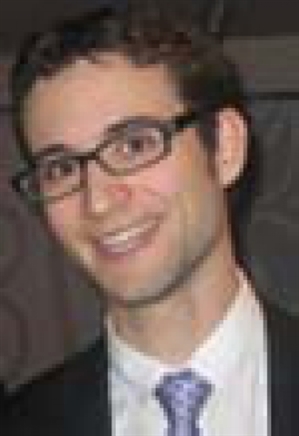 Cristian Linte
Cristian LinteMinimally Invasive Surgery and Therapy Revisited: Tools for Virtual Visualisation and Guidance
Cristian gave an overview of his work for the past 6-8 years which has been centered on medical imaging and the manipulation of medical images.
Medical imaging has revolutionised healthcare over the past few years and Cristian's work mainly focuses on exploring the use of medical imaging to create new paradigms for image-guided visualisation and navigation for minimally invasive therapy. I found it particularly interesting to hear how the various scanning methods can be combined to create accurate, detailed and 'real-time' images.
Watch Cristian's presentation.
 Piotr Laszczak
Piotr LaszczakDevelopment of tri-axial pressure and shear (TRIPS) sensors for lower limb prosthetics
Piotr's talk covered his PhD research on the development of Tri-axial Pressure and Shear (TRIPS) sensor technology and how it can be applied to lower limb prosthetics. Prosthestics at present are produced in a dated and time-consuming fashion and tend to require a few re-iterations before an acceptable prosthetic is produced. During his PhD Piotr was able to develop TRIPS, a sensor technology which allows pressure and shear to be measured simultaneously.
Watch Piotr's presentation.
 Joachim Behar
Joachim BeharNon-Invasive FECG Extraction from a Set of Abdominal Sensors
The focus of Joachim's work was to develop a non-invasive method of monitoring foetal distress in order to assess the risk of birth asphyxia for the newborn and improve clinical decision making. Having successfully created a suitable method it was interesting to hear how one of the next steps will be to monitor multiple foetuses.
Watch Joachim's presentation.
 Samantha Simons
Samantha SimonsClassification of Alzheimer’s disease from Quadratic Sample Entropy of the EEG
This was Samantha's second win at the Healthcare Awards (she was also awarded with the IET Dennis Hill Award in 2012). Samantha’s PhD explored the use of electroencephalograms and non-linear signal processing methods to help identify Alzheimer’s disease at an earlier stage. Alzheimer’s disease can currently take up to 20 years to diagnose and is the biggest cause of dementia in the western world so it was fascinating to hear about some of the work being done to improve this area.
Watch Samantha's presentation.
 Julien Oster
Julien OsterModel-based electrocardiogram analysis: applications to a noisy situation with recordings during magnetic resonance imaging
ECGs are commonly used during MRI scans to ensure patient safety and proper recording of the electrocardiogram in the MRI environment. However, the static magnetic field found within the MRI environment means it can be difficult to record an ECG during an MRI. Julien’s research explored model-based ECG denoising to overcome this issue.
Watch Julien's presentation.
Feeling inspired by the above presentations? To find out more about the Healthcare Technologies Student and Early Career Awards or to submit your entry please visit our event webpage.